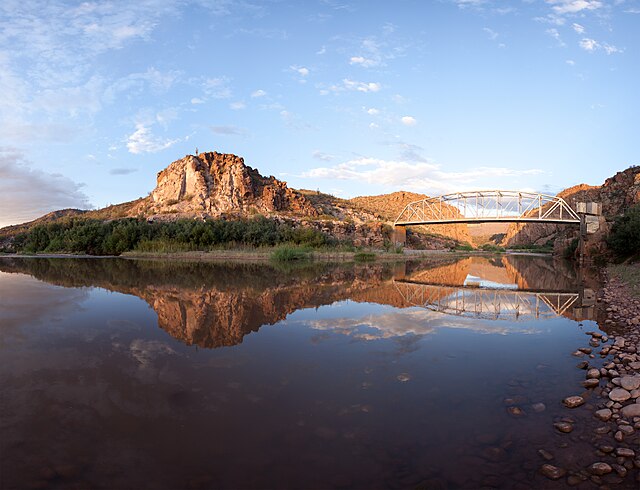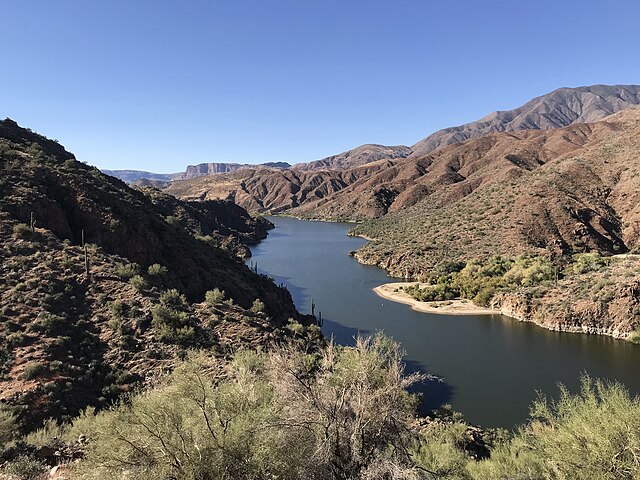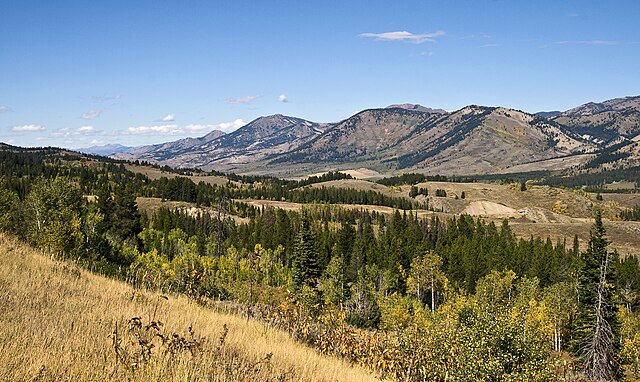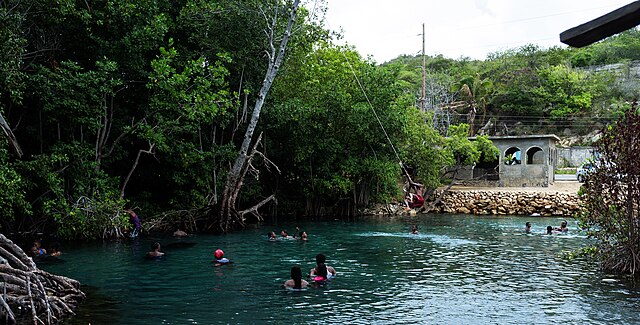Picture this: you’re floating down a pristine desert river, surrounded by towering saguaro cacti and rugged mountain peaks, with the Arizona sun warming your face and crystal-clear water keeping you cool. Welcome to Salt River tubing, one of Arizona’s most beloved outdoor adventures that transforms the scorching desert landscape into your personal water playground.
Salt River tubing isn’t just another water activity – it’s a unique blend of desert beauty, wildlife encounters, and refreshing escapism that draws thousands of adventure seekers every year. Whether you’re a thrill-seeking local or a curious tourist, this comprehensive guide will help you navigate everything you need to know for the perfect Salt River tubing experience.
Top 10 Bearizona Experiences Arizona’s Best Wildlife Park
What Makes Salt River Tubing Special?
Arizona’s Desert Oasis Adventure
Have you ever wondered what makes floating down a desert river so magical? The Salt River creates an extraordinary contrast against Arizona’s arid landscape, offering a cool refuge that feels almost surreal. This isn’t your typical mountain stream or coastal waterway – it’s a desert gem that provides relief from temperatures that can soar above 110°F during summer months.
The river winds through the Tonto National Forest, creating a natural corridor of life in the Sonoran Desert. As you float downstream, you’ll witness how water transforms the harsh desert environment into a lush riparian ecosystem. Towering cottonwoods and willows line the banks, creating shade pockets that offer respite from the intense Arizona sun.
What sets Salt River tubing apart from other water activities is its accessibility combined with genuine wilderness experience. You’re not just floating down any river – you’re journeying through one of the most biodiverse desert ecosystems in North America, all while staying refreshingly cool in the desert heat.
Wildlife Encounters on the River
The Salt River ecosystem hosts an incredible variety of wildlife that makes every tubing trip feel like a nature documentary. Wild horses roam freely along the riverbanks, descendants of animals that have called this area home for generations. These magnificent creatures often come to the water’s edge to drink, creating unforgettable photo opportunities for lucky tubers.
But the horses are just the beginning of your potential wildlife encounters. Great blue herons stand motionless in shallow waters, while red-tailed hawks circle overhead. You might spot javelinas (desert pigs) cooling off in the shade, or catch glimpses of desert bighorn sheep on distant cliffs. The river also supports various fish species, and if you’re particularly observant, you might even see river otters playing in the deeper pools.
These wildlife encounters aren’t guaranteed, but they’re common enough that most tubers see at least some desert animals during their journey. The key is moving quietly and keeping your eyes open – the desert wildlife is there, but they’re experts at blending into their environment.
Planning Your Salt River Tubing Trip

Best Time to Go Tubing
Timing your Salt River tubing adventure can make the difference between an incredible experience and an uncomfortable ordeal. The river is accessible year-round, but certain seasons offer distinct advantages depending on what you’re looking for.
Spring (March through May) represents the sweet spot for many tubers. Temperatures hover in the comfortable 80-90°F range, water levels are typically optimal, and desert wildflowers create a stunning backdrop. You’ll avoid the intense summer heat while still enjoying warm, sunny weather perfect for water activities.
Summer (June through August) brings the highest temperatures but also the most refreshing contrast between air and water temperature. If you can handle the heat and take proper precautions, summer tubing offers an incredibly cooling experience. Just remember that temperatures can exceed 115°F, making sun protection and hydration absolutely critical.
Fall (September through November) provides another excellent window, with temperatures moderating while maintaining warm water conditions. The summer crowds begin to thin out, giving you more space to enjoy the river’s natural beauty.
Seasonal Considerations
Winter tubing is possible but requires different preparation. While air temperatures might reach 70°F on sunny days, water temperatures remain quite cold. You’ll need wetsuits or other thermal protection to enjoy winter tubing comfortably.
Water release schedules also affect your tubing experience. The Salt River Project manages water flows from upstream dams, and release schedules can impact water levels and current strength. Higher releases create faster currents and shorter trip times, while lower releases mean slower, more relaxed floating.
Weather and Water Conditions
Arizona’s weather can change rapidly, especially during monsoon season (July through September). Afternoon thunderstorms can create dangerous conditions on the river, with lightning, flash flooding, and strong winds posing serious risks. Always check weather forecasts before your trip and be prepared to postpone if severe weather threatens.
Water conditions vary based on upstream releases and seasonal factors. Spring snowmelt and summer monsoons can create higher, faster-moving water, while drought conditions might result in shallower, slower sections. Contact local outfitters for current water condition reports before planning your trip.
What to Bring for Your Adventure
Essential Items Checklist
Successful Salt River tubing requires thoughtful preparation. Your essential items list should prioritize safety, comfort, and protection from Arizona’s intense sun and heat.
Sunscreen is absolutely non-negotiable – and we’re talking heavy-duty, water-resistant SPF 30 or higher. The desert sun reflects off the water, creating double exposure that can cause severe burns even on cloudy days. Reapply frequently, especially after swimming or splashing.
A wide-brimmed hat provides crucial shade for your face and neck. Choose one with a chin strap to prevent loss during river activities. Sunglasses with UV protection and a retention strap protect your eyes from glare and potential loss.
Water is life in the desert, and you’ll need more than you think. Bring at least one gallon per person for day trips, stored in unbreakable containers. Electrolyte drinks or supplements help replace minerals lost through sweating in the desert heat.
Quick-dry clothing works best for river activities. Synthetic materials or merino wool dry faster than cotton and provide better temperature regulation. Consider long-sleeved shirts and pants for maximum sun protection, especially during peak heat hours.
Waterproof storage protects valuable items like phones, keys, and identification. Dry bags or waterproof cases are essential, as splashing and occasional swimming are inevitable parts of the tubing experience.
Items to Leave at Home
Certain items can enhance your safety by staying behind. Glass containers pose risks if broken, potentially injuring other river users. Aluminum cans are environmentally friendlier and won’t shatter if dropped.
Disposable items often become litter, accidentally or otherwise. The Salt River ecosystem is pristine and fragile – pack reusable alternatives whenever possible. What you bring in, you should bring out.
Expensive jewelry and electronics (beyond waterproofed essentials) are better left secure at home or in your vehicle. River activities involve inherent risks of loss, and the desert environment can damage sensitive electronics.
Salt River Tubing Rental Options

Popular Rental Companies
Several established outfitters serve the Salt River tubing community, each offering different advantages for your adventure. Salt River Tubing & Recreation has operated along the river for decades, providing reliable equipment and shuttle services. Their location offers convenient access to popular launch points and maintains a large fleet of well-maintained tubes.
Saguaro Lake Ranch provides a more comprehensive outdoor experience, combining tubing with other recreational activities. They offer group packages and can arrange multi-activity adventures for those wanting to explore beyond just tubing.
Local outfitters often provide more personalized service and insider knowledge about current river conditions. They can recommend specific launch points based on your experience level and desired trip length, and often offer better deals for repeat customers or large groups.
Pricing and Package Deals
Salt River tubing costs vary based on season, group size, and included services. Basic tube rental typically ranges from $15-25 per person, while package deals including shuttle service might cost $20-35 per person. Peak season (summer months) usually commands higher prices due to increased demand.
Most outfitters offer different tube styles for varying comfort levels. Basic tubes work fine for most people, but premium options with backrests or cup holders provide extra comfort during longer trips. Consider your priorities – basic tubes cost less but premium options enhance the experience.
Shuttle services add convenience but increase costs. Many launch points require walking back to retrieve vehicles, making shuttle services valuable for groups or those preferring not to walk in desert heat after their river adventure.
Group Discounts Available
Groups of 10 or more people often qualify for discounts ranging from 10-20% off individual pricing. Some outfitters offer additional perks for large groups, such as reserved launch times or complimentary cooler storage.
Corporate groups and special events might receive customized packages including catering, photography services, or extended equipment rental periods. Contact outfitters directly to discuss group needs and available customizations.
Safety Tips for Salt River Tubing
Water Safety Guidelines
Water safety on the Salt River requires understanding both typical river hazards and desert-specific challenges. The river generally flows at a manageable pace, but certain sections feature faster currents, shallow areas, and obstacles like rocks or fallen trees.
Always wear your life jacket properly fitted and secured. Even strong swimmers can encounter unexpected situations in moving water, and life jackets provide crucial buoyancy and visibility. Don’t let peer pressure or comfort levels convince you to skip this essential safety equipment.
Stay with your group and maintain visual contact with other tubers. Desert rivers can be deceptively isolating, and getting separated from your party can create serious safety concerns. Designate a lead person and sweep person to ensure no one falls behind or gets ahead of the group.
Be aware of your surroundings and potential hazards. Shallow areas might require walking or dragging your tube, while deeper pools offer swimming opportunities. Watch for overhanging branches, submerged rocks, or other obstacles that could cause injury or equipment damage.
Sun Protection Strategies
Arizona’s high altitude and clear desert air intensify UV radiation beyond what many visitors expect. Even experienced outdoor enthusiasts can underestimate the sun’s power in the desert environment.
Reapply sunscreen every two hours minimum, and more frequently if you’re swimming or getting splashed. Water washes away even “waterproof” sunscreen, and the combination of sun and wind can cause rapid burns. Don’t forget often-missed areas like feet, ears, and the underside of your chin.
Seek shade whenever possible during rest stops or lunch breaks. The sparse desert vegetation means limited natural shade, so plan your stops around available shelter. Some tubers bring portable shade structures for extended breaks.
Hydration and Heat Safety
Heat-related illness develops quickly in desert environments, especially when combined with physical activity and sun exposure. Recognize early warning signs like excessive thirst, headache, dizziness, or decreased urination.
Drink water regularly throughout your trip, not just when you feel thirsty. Thirst is a late indicator of dehydration in hot climates. Alternate water with electrolyte drinks to replace minerals lost through sweating.
Take breaks in shade or water when possible. The river provides natural cooling, but don’t rely solely on water contact for temperature regulation. Your body needs time to cool down completely during rest periods.
The Tubing Route: What to Expect
Starting Point and Launch Areas
Popular Salt River tubing routes typically begin at designated launch areas managed by outfitters or public access points. The most common starting point is near the intersection of Power Road and the Salt River, offering easy vehicle access and parking facilities.
Water Mesa Recreation Site provides another popular launch point with restroom facilities and picnic areas. This location offers slightly different scenery and route options, depending on water releases and seasonal conditions.
Your chosen launch point affects trip length and scenery variety. Longer routes provide more wilderness experience but require greater time commitment and physical endurance. Shorter routes work better for families with young children or groups preferring a more relaxed pace.
Notable Landmarks Along the Way
The Salt River tubing route features several distinctive landmarks that help navigate and provide natural stopping points. Phon D Sutton Recreation Area marks a popular midpoint with restroom facilities, picnic tables, and easy vehicle access for pickup or resupply.
Granite Reef Dam creates a distinctive backdrop and marks the end of many tubing routes. The dam structure provides interesting scenery and historical significance, as it’s part of Arizona’s early irrigation and water management infrastructure.
Various rock formations create natural swimming holes and rest areas throughout the route. These geological features provide landmarks for navigation and natural gathering spots for groups to regroup or take extended breaks.
Swimming Holes and Rest Stops
Several deep pools along the route offer excellent swimming opportunities and relief from floating. These natural swimming holes typically feature calmer water and easier entry/exit points than the flowing river sections.
Popular swimming areas include sections near large boulders or rock outcroppings that create natural pools. These areas often feature rope swings or jumping spots, though always assess water depth and safety before participating in these activities.
Plan rest stops around these swimming holes, especially during hot weather. The combination of swimming and shade provides maximum cooling and comfort during peak heat periods. Use these stops to rehydrate, reapply sunscreen, and check on group members’ wellbeing.
Beyond Tubing: Other Salt River Activities

Kayaking and Rafting Options
The Salt River system offers excellent opportunities for more active water sports beyond tubing. Kayaking provides greater control and mobility, allowing exploration of side channels and quieter backwater areas that tubers might miss.
Single and tandem kayak rentals are available from most outfitters, often at similar pricing to premium tube rentals. Kayaking requires more physical effort but rewards paddlers with access to wildlife viewing areas and photographic opportunities difficult to reach while tubing.
Rafting works well for larger groups or those preferring shared experiences. Multi-person rafts provide stability and social interaction while requiring coordinated paddling effort. Some outfitters offer guided raft trips with naturalist guides who provide information about desert ecology and wildlife.
Hiking Trails Near the River
The Salt River corridor features numerous hiking opportunities that complement your water activities. Trails range from easy riverside walks to challenging desert mountain routes offering spectacular views of the river valley.
The Salt River Trail provides relatively easy walking along the riverbank, perfect for wildlife viewing or accessing different sections of the river. This trail connects various recreation areas and offers multiple access points for different skill levels.
More challenging hikes lead into surrounding desert mountains, providing panoramic views of the river system and Phoenix metropolitan area. These trails require proper desert hiking preparation but reward adventurous spirits with incredible scenery and solitude.
Consider combining water and land activities for a full desert experience. Morning hikes followed by afternoon tubing provide variety while avoiding the hottest parts of the day for land-based activities.
Conclusion
Salt River tubing represents the perfect fusion of desert adventure and refreshing escape that makes Arizona such a unique destination. From floating past wild horses and desert wildlife to cooling off in natural swimming holes surrounded by towering saguaros, this experience offers something you simply can’t find anywhere else in the world.
The key to an unforgettable Salt River tubing adventure lies in proper preparation, respect for the desert environment, and embracing the unique character of this remarkable ecosystem. Whether you’re seeking family-friendly fun, group adventures, or solo exploration, the Salt River provides an accessible gateway to Arizona’s natural wonders.
Remember that this desert oasis requires our protection and respect. Practice Leave No Trace principles, stay hydrated, protect yourself from the sun, and take time to appreciate the incredible landscape surrounding you. Your Salt River tubing adventure will become one of those experiences you’ll find yourself describing to friends long after you’ve dried off and headed home.
The river awaits – are you ready to dive into Arizona’s most refreshing desert adventure?
Frequently Asked Questions
Q1: How long does a typical Salt River tubing trip take?
A typical Salt River tubing trip lasts 3-4 hours depending on water flow, group size, and how many stops you make along the way. Faster spring releases might complete the route in 2-3 hours, while low summer flows could extend the trip to 5-6 hours. Plan for a full day including transportation and preparation time.
Q2: Can children participate in Salt River tubing safely?
Yes, children can safely enjoy Salt River tubing with proper supervision and equipment. Most outfitters require children to be at least 8 years old and provide appropriately sized life jackets. Parents should stay close to children throughout the trip and consider shorter route options for younger participants.
Q3: What happens if I lose my tube or equipment during the trip?
Most rental companies include basic equipment replacement in their fees, but you’re typically responsible for equipment lost due to negligence. Secure all gear properly and follow outfitter guidelines to prevent losses. Some companies offer insurance options for valuable personal items.
Q4: Are there bathroom facilities along the Salt River tubing route?
Limited bathroom facilities exist at certain recreation areas along the route, primarily at Phon D Sutton Recreation Area. Plan accordingly and use facilities at launch points before beginning your trip. Some outfitters provide portable facilities at popular stopping points during peak season.
Q5: Can I bring my own tube instead of renting?
Many access points allow personal tubes, but check local regulations and parking availability before bringing your own equipment. Rental tubes are specifically designed for river conditions and include safety features that recreational pool tubes might lack. Consider shuttle logistics if using personal equipment, as you’ll need transportation back to your starting point.

